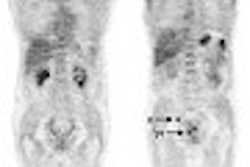NEW ORLEANS - At this week's Society of Nuclear Medicine meeting, Siemens Medical Solutions highlighted the latest update to its e.soft workstation, and announced an ongoing research partnership.
The new e.soft application is based on the Malvern, PA-based vendor's syngo multimodality software platform, and employs a Microsoft Windows-style user interface. Standard features include processing, workflow, and display tools such as e.soft image fusion activity, a drag-and-drop image display arrangement, a correlated cursor tool for comparison of simultaneously acquired studies, and correlated MIP (Maximum Intensity Projection) and slice display.
Also standard are new organ specific protocols for cardiac, renal, lung, brain, and parathyroid image processing. Other standard syngo features include a transition to the Windows XP platform, and the ability to transfer the DICOM viewer and images onto a CD, allowing referring physicians to view the images on any personal computer.
Optional features of the e.soft workstation include cardiac and general Flash 3D, for image reconstruction of cardiac and general SPECT imaging. Based on a 3-D iterative algorithm, Flash 3D reconstructions are performed on the standard e.soft workstation, and with enhanced speed on the e.soft turbo workstation, according to Siemens.
In other news, the vendor reported a research partnership initiative with biopharmaceutical firm Cytogen of Princeton, NJ, and the University Hospitals of Cleveland to promote advances in prostrate cancer imaging.
As a result of this partnership, physicians at the institution are using the Siemens e.cam gamma camera with Flash 3D iterative reconstruction and CT attenuation correction technology, in combination with the monoclonal antibody agent ProstaScint from Cytogen. The resulting images are providing major improvements for the diagnosis and staging of metastatic prostate cancer, according to physicians at the facility.
In their research at the University Hospitals of Cleveland, the physicians are imaging the prostate prior to surgery, and then confirming their diagnosis through examination of the specimen following the procedure. They report an average accuracy of approximately 90% in the identification of the tumor location through the imaging procedure, as verified by pathology, according to Siemens.
By AuntMinnie.com staff writersJune 23, 2003
Related Reading
Siemens launches new C512 Sequoia, June 13, 2003
Siemens puts its PET/CT on the road, June 3, 2003
Siemens places Sequoia at Rush-Presbyterian, May 29, 2003
Siemens offers HIPAA compliance programs, May 22, 2003
Siemens gets OK for virtual colonoscopy software, May 13, 2003
Copyright © 2003 AuntMinnie.com




















